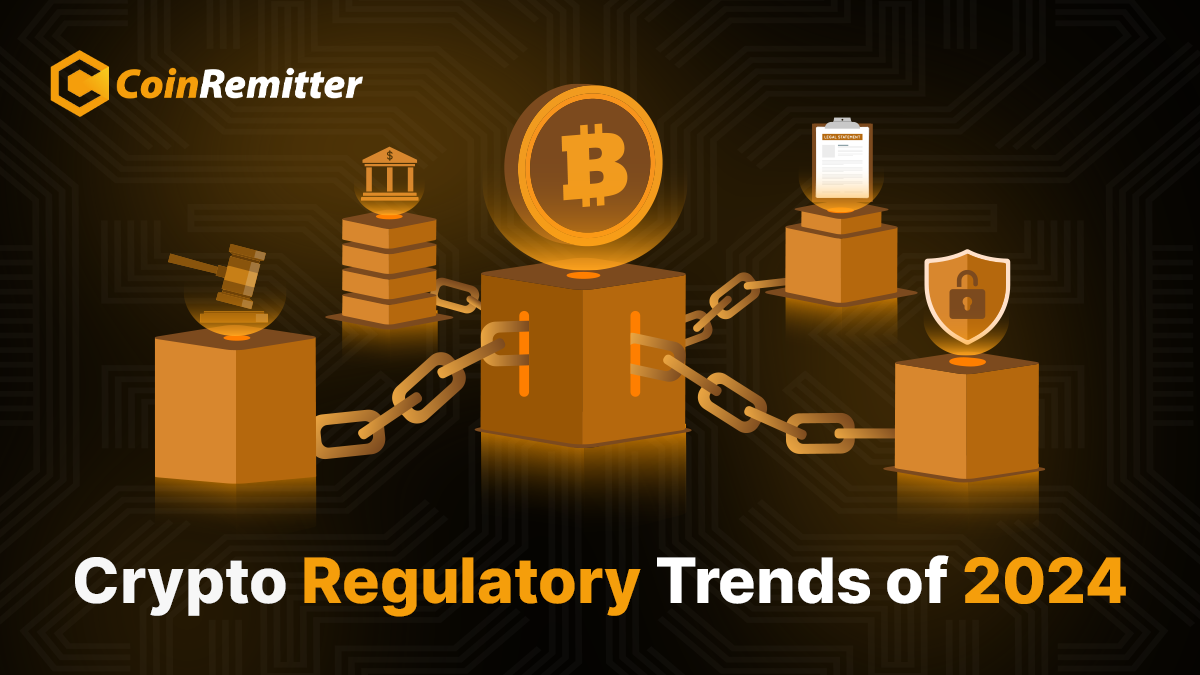Crypto Regulatory Trends of 2024

2024 is going to be an interesting year for the global crypto market. The market is evolving at a rapid pace, which presents interesting opportunities and challenges. From efforts to boost oversight of stablecoin arrangements, to focus on the DeFi space, 2024 promises to be a year of crypto regulatory developments. This blog will look into the key regulatory trends anticipated in 2024, equipping active cryptocurrency users with the knowledge they need to navigate this evolving landscape.
So, let’s begin.
DeFi will be on the Radar of Regulators
In the last couple of years, regulators have shifted their focus on DeFi (Decentralized Finance) due to its rapid growth. Regulatory agencies in the US such as the CFTC and SEC have taken legal action against DeFi’s projects for allegedly violating securities and commodities laws. The United States Department of the Treasury has also flagged DeFi’s financial crime risks in a 2023 report and sanctioned Tornado Cash for aiding money laundering and sanctions evasion, a decision upheld by courts despite industry protests. The FATF and IOSCO are urging global coordination to address DeFi risks through anti-financial crime measures. In 2024, the question is can DeFi align with regulations while maintaining its decentralized innovation?
Stablecoins will take Center Stage
Stablecoins are gaining traction among financial institutions worldwide, attracting the attention of regulators also in 2024. New rules under MiCAR (Markets in Crypto Asset Regulations) might soon apply to stablecoin issuers, with similar efforts underway in Hong Kong, Singapore, and the UK. These regulations aim to ensure that stablecoins issuers hold adequate reserves, protect holders’ interests, and manage assets securely. Authorities are ensuring to enhance their oversight to address financial crime risks, like money laundering. These developments aim to increase accountability, transparency, and confidence for institutional involvement in stablecoins while pressing issuers and exchanges to manage associated risks effectively.
Regulations on the Fusion of AI and Blockchain
In recent years, the worlds of cryptocurrency and Artificial Intelligence have often been seen as separate and even competitive. Some experts dismiss each other’s technologies and consider them nothing more than hype. Yet, a growing number of innovators believe that these fields will merge to drive the next wave of tech advancement. Experts are witnessing the potential of integrating AI on blockchain to revolutionize crypto trading strategies. As these integrations unfold, regulatory scrutiny will also happen. Jurisdictions, like the EU with its AI Act, similar to MiCA for crypto, are developing frameworks to govern these technologies. This will focus on the fusion between AI and crypto, and their ability to shape the future in 2024 and beyond.
The US for the Crypto Industry
Last year, the United States witnessed a period of increased legislative activity regarding the regulatory framework for cryptocurrencies. This development offered a potential path toward a more comprehensive approach to governing the booming digital asset class. Two key pieces of legislation emerged at the forefront of this discourse: the Financial Innovation and Technology (FIT) for the 21st Century Act and the Blockchain Regulatory Certainty Act. These proposed bills aimed to address several pertinent issues within the cryptocurrency ecosystem. A primary objective of the FIT Act and the BRCA was to establish a clear classification system for cryptocurrencies. This classification would determine whether an asset falls under the purview of security regulations, overseen by the Securities and Exchange Commission (SEC), or commodity regulations, managed by the Commodity Futures Trading Commission (CFTC). The lack of such a system has been a significant challenge, creating uncertainty for both businesses and investors. Additionally, the FIT Act and the BRCA sought to describe the roles and responsibilities of various regulatory bodies involved in the cryptocurrency landscape.
The Role of CBDCs
Central Banks worldwide are investing in CBDCs, a digital form of fiat currency (traditional currency). The development of CBDC regulations is likely to occur alongside ongoing pilots and trials. A key question is how CBDCs will interact with existing cryptocurrencies. Will CBDCs compete with or complement private cryptocurrencies? They could potentially offer faster transaction settlements and lower fees compared to traditional fiat currencies, potentially impacting stablecoin usage. Additionally, the impact of CBDCs on the overall financial ecosystem needs to be carefully considered. Will CBDCs lead to greater financial inclusion or create new systemic risks? Regulatory frameworks surrounding CBDCs will address these questions and ensure a smooth integration into the existing financial system in 2024.
Security Token Offerings (STO)
Security Token Offerings (STOs) have emerged as a game-changer in the world of fundraising. With the mix of blockchain technology with the established regulatory framework, STOs offer a compelling alternative for businesses seeking capital. 2024 will prove to be an important year for STO regulations. As governments worldwide grapple with the thriving crypto market, a shift towards clearer frameworks for STOs is expected. This reflects a growing recognition of the potential benefits of blockchain technology within traditional financial systems. Regulatory sandboxes, where companies can test their STO offerings under relaxed guidelines, are a possibility.
Conclusion
The year 2024 promises to be an important one for crypto regulations. While regulations may introduce some restrictions, they also bring clarity and stability, ultimately developing trust and wider crypto adoption. As the industry continues to evolve, ongoing dialogue between regulators, industry leaders, and consumers will be essential to navigate the path forward.
Over 38,000 merchants are using CoinRemitter
Join them now



